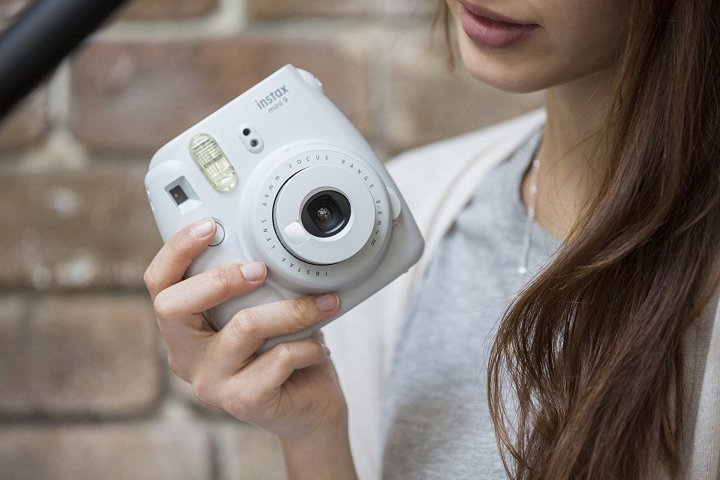
Instant film photography has had a rough decade or two with the advent of smartphones and more affordable point-and-shoot cameras. Still, though, it persists in various formats from two notable companies, Fujifilm and Polaroid Originals (previously known as the Impossible Project, the company that singlehandedly kept the Polaroid brand from fading into oblivion). To help you better pick out what camera is best for your needs, we’ve rounded up the best instant cameras in categories ranging from simple point-and-shoots to fully manual machines.
Polaroid OneStep 2 i-Type
($100)
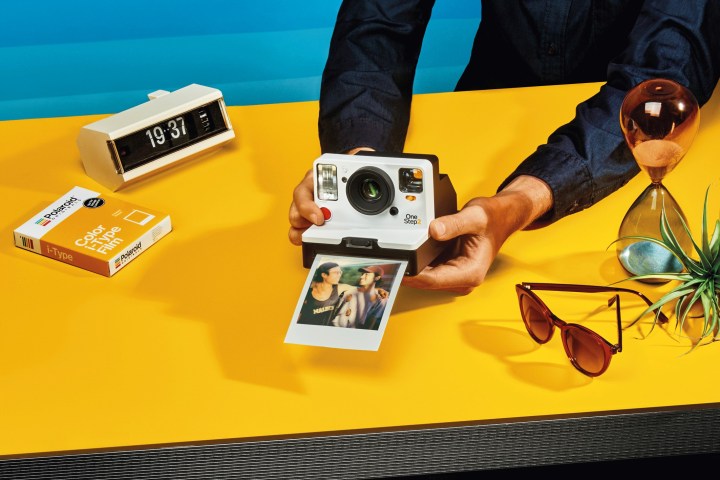
Polaroid’s original OneStep camera is as iconic as it gets in the world of instant — and photography in general. Although the original, first made in 1977, has long stopped being produced, Polaroid Originals has revived the OneStep with the OneStep 2 i-Type Camera.
Inspired by the original, the OneStep 2 i-Type Camera blends classic design with contemporary style and adds a few new technological improvements to bring the design into the 21st century. The camera now uses a rechargeable USB battery with a 60-day battery life and can shoot both Polaroid 600 film, as well as Polaroid’s i-Type film.
Buy one now from:
Polaroid OneStep 2 i-Type
Fujifilm Instax Mini 9
($60+)
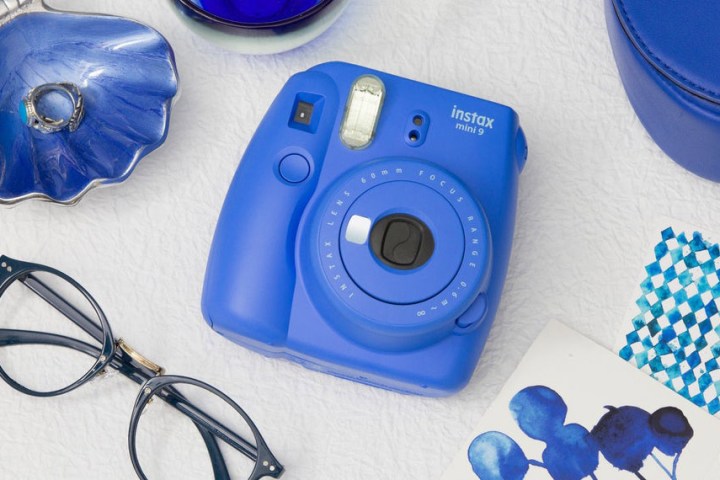
The adorable Instax Mini 9 is Fujifilm’s latest entry-level camera. Released in April, the Instax Mini 9 shoots the smaller Instax Mini format. It features an integrated selfie mirror, a close-up lens attachment, and a five-setting ring that allows you to dial in the proper exposure.
A single button is used to push out the 60-millimeter lens from the body of the camera. Extending the lens also turns the camera on and powers up the built-in flash, making it easy to get the camera up and running in a second or two. The shutter button is on the grip of the camera, located directly below the viewfinder. Focus is fixed with a claimed range of 0.6 meters to infinity, which should be good enough for most arm-length selfies. It comes in five colors, too, including cobalt blue, ice blue, flamingo pink, lime green, and smoky white, and can be had for $70.
Buy one now from:
Fujifilm Instax Mini 9
Instax Mini 90 NEO Classic
($120+)

The Mini 90 is a more robust device than the aforementioned Instax Mini 9, one that dons a retro aesthetic to boot. Inspired by the leather-adorned cameras of yesteryear, the Instax Mini 90 wouldn’t look too out of place next to a Leica M-series camera if you didn’t know it was made of plastic.
The Instax Mini 90 offers a rechargeable battery, an integrated LCD display, and manual exposure control for more precise snapshots. On the rear of the camera, you’ll find five buttons, located directly below the two LCD displays. These are used to control exposure and shooting modes, as well as the timer. The most welcome button of all, however, is the dedicated flash button, which lets you turn off the flash.
On the front of the camera is the power switch, which turns the camera on and extends the same 60-millimeter lens used in Fujifilm’s other Instax cameras. Unlike the Instax Mini 9, the Mini 90 offers a closer focusing distance of just 0.3 meters to infinity, meaning your selfies will be sharp even if your reach is limited.
The analog-inspired aesthetic of the Instax Mini 90 sets it apart from Fujifilm’s other offerings, and when you throw in the additional exposure controls and rechargeable battery, you have yourself a rather capable Instax camera that retails for $140.
Buy one now from:
Instax Mini 90 NEO Classic
Lomography LC-A+ Instant Back ($250)

This product differs from the rest in that it’s not actually a standalone camera, but a dedicated back designed to turn Lomography’s Lomo LC-A+ camera into an instant camera that is capable of shooting Instax Mini film.
The solution is far from intuitive, however, as the Instant back blocks the viewfinder and more than doubles the size of the camera. But considering the restrictions at hand, it’s still an impressive feat. The resulting images are very saturated in color and tend to have high contrast, though, thanks to the Minitar-1 lens attached to front of the Lomo LC-A+ camera.
Literally piggybacking off the LC-A+ camera body, the Instax back captures images shot on the camera’s 32-millimeter, f/2.8 lens. Exposure is adjusted using a small lever near the lens of the camera, which is actually designated to change the ISO settings used when shooting on transparency film.
Buy one now from:
Mint InstantFlex TL70 2.0 ($389)

Inspired by twin lens reflex cameras, the Mint InstantFlex TL70 2.0 takes a whole new approach to Instax photography. Like an old Rolleiflex, the Mint InstantFlex TL70 2.0 offers a top-down view using its 1:1 preview waist-level viewfinder.
Unlike most other Instax cameras, the Mint InstantFlex TL70 2.0 offers full focus and aperture control. This gives you more creative control when capturing an Instax photo, most notably when it comes to shallow depth of field, which is difficult to come by in most instant cameras. An integrated flash for capturing late-night selfies is also hidden beneath the InstantFlex nameplate.
At $389, it’s one of the more expensive options available, one that rivals the cost of the original cameras it draws inspiration from. However, if you don’t mind shelling out the dough for a unique experience and aesthetic, it’s a solid option that will help you stand out from the crowd.
Buy one now from:
Leica Sofort
($265)
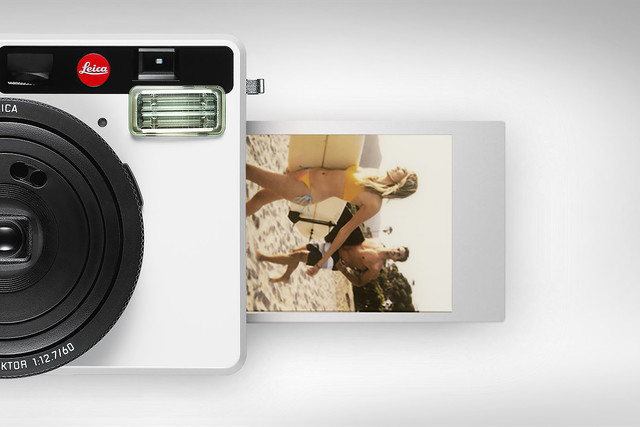
Leica is most known for its impressive lineup of 35-millimeter rangefinder cameras, but last year the company rattled the photography world when it announced the Leica Sofort, a $300 instant camera that uses Instax Mini Instant Film.
One of the defining features of any Leica camera is its impressive set of lenses. The Sofort isn’t any different with its Automatik-Hector 60-millimeter, f/12.7 lens — arguably the best lens you’ll find in an instant camera. The device also features a built-in flash and mechanical shutter, which works alongside a slew of automatic shooting modes to capture 100 photos on a single charge.
It’s not cheap for an instant camera, but it’s hands-down the most affordable Leica you’ll ever get your hands on.
Buy one now from:
Leica Sofort
Instax Wide 300
($90)
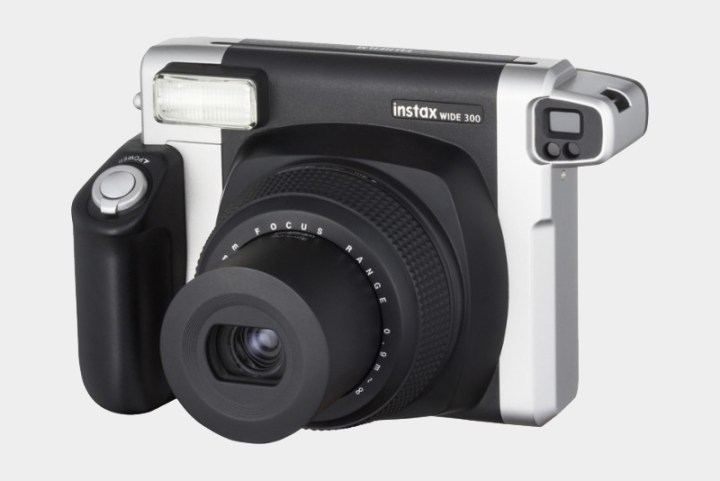
The Instax Wide 300 is the first of two cameras in our list that uses the larger of the two Instax formats. Unlike the standard Instax format, which measure in at 86 x 54 millimeters, the wide format measures in at 86 x 108 millimeters, which is exactly double the width. In doing so, you end up with an instant photo that’s more reminiscent of the original Polaroid instant film.
On the rear of the Instax Wide 300, there’s an integrated LCD that displays your remaining photos and controls for both flash and brightness. The camera also features a zoom lens, a unique feature among instant cameras. For those times when you want to take a hands-off approach, there’s a standard tripod socket — which, considering the size of the camera, may come in handy. The Instax Wide 300 uses a single set of AA batteries, which lets you burn through about 10 packs of film before you run dry.
Buy one now from:
Amazon
Lomo’Instant Wide ($200+)

Deemed “the world’s most creative instant wide camera and lens system” by its creators, the Lomo’Instant Wide is one of the most capable cameras on the market for shooting Instax film.
Taking a vintage approach to its aesthetic, the Lomo’Instant Wide is anything but antique in its features. At the core of the camera is its 35-millimeter, f/8 lens, which has a lens cap that doubles as a wireless remote for the camera. It’s “Fully Programmatic Shutter” will nail the perfect exposure every time, and the Lomo’Instant Wide includes a long exposure mode, a multiple exposure mode, and a dedicated syncing port for additional creative control. The camera starts at $200, but there’s $250 option that includes additional lens attachments and color gel flash filters.
Buy one now from:
Amazon
Fujifilm Instax SQ10
($200)

This Fujifilm is arguably the most advanced instant camera to ever hit the market. Unlike the other cameras on our list, the SQ10 is actually a digital camera with a built-in analog printer. Additionally, it is the first Instax camera to use the new Instax Square format, which closely resembles original Polaroid film (albeit, a touch smaller).
The SQ10 captures 1,920 x 1,920-pixel JPEGs and can save 50 images to its internal memory. Files can be transferred to a computer via Micro USB and memory can also be expanded with a Micro SD card. If one photo in particular looks good, you can also immediately print one (or many) out onto the 1:1 ratio Instax film. The lens is a 28.5-millimeter equivalent with a fast f/2.4 aperture.
The technology behind how the Instax film is exposed is a bit of a secret, but it’s safe to say Fujifilm uses the same technology behind its SP-2 instant film printer. Being a digital system, the SQ10 also features autofocus with facial recognition, automatic exposure, multiple shooting modes, and a host of creative effects.
Buy one now from:
Amazon



